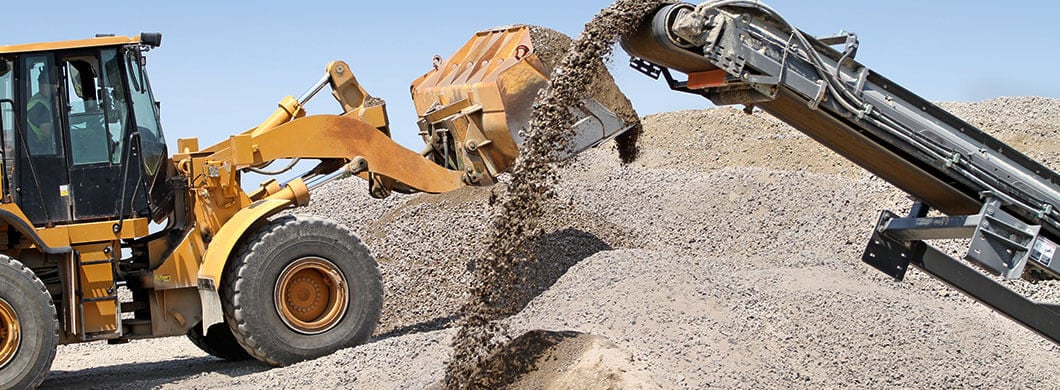Within the category of aggregate materials lies a broad number of grained materials instrumental to the modern construction process. Materials such as sand, gravel, crushed stone, recycled concrete, and so on. Builders have always valued aggregates for everything from ballast to layering, but in recent years, demand for them has skyrocketed beyond anyone’s expectations.
As a result, shortages of materials like sand (as detailed in this NPR story) have become commonplace, so much so that there are now entire criminal enterprises based on their harvest and distribution. But what exactly has caused this runaway demand, and how should builders prepare themselves if its growth continues?
Aggregates are granular materials used in construction, derived from natural rock materials or recycled by-products. They are fundamental to the construction industry, forming the backbone of concrete, asphalt, and other building materials. Common types include sand, gravel, crushed stone, and recycled concrete.
Aggregates are chosen for their durability, strength, and ability to withstand weathering. They are classified by size and are pivotal in providing stability and support in construction projects, ranging from roads and bridges to buildings and infrastructures. Their selection and testing are crucial for ensuring the structural integrity and longevity of construction projects.
A Whole New World for Aggregate Materials
On its face, the answer to where this new demand for aggregate materials has come from is simple. After all, many of the world’s countries are undergoing rapid modernization processes, processes that require gigantic amounts of aggregate material to feed building growth and infrastructure investment.
Though Indonesia, Vietnam, and India all fall under this categorization, it’s China’s growth that’s really pushed the demand for aggregate materials to new heights. This should come as no surprise to anyone who’s seen the skylines of modern Chinese cities spring up seemingly overnight. In achieving that astonishing rate of construction, China used more cement than the United States had throughout the entire 20th century.
Speaking of the US, the issue is not so much that there are new players in the aggregate market as it is that the old players are still present. Experts forecast that the nation will increase its consumption of aggregate materials by 2.9% year over year, reaching 2.8 billion metric tons (Gt) by 2019. Although other world markets demand significantly more, the US still buys about 8% of all the world’s aggregates. This percentage is expected to remain steady or even rise as the nation continues to bounce back from the Great Recession of 2008 to 2012.
Keep Reading: Is Mercury Illegal to Own? Understanding Regulations.
The presence of multiple players at the bargaining table would, on its own, be enough to drive up demand for these materials and the prices that firms can expect to pay for them. The matter only becomes more complicated, however, when you consider the fact that the worldwide supply of aggregate materials is rapidly diminishing. This has been evidenced most clearly in the astonishing consumption of sand in recent years. Additionally, some groups are taking dangerous, illegal steps to procure the material, and gravel reserves have dipped to never-before-seen lows.
The issue in maintaining supply is two-fold. For one, there’s no getting around the fact that the Earth only has so much to offer in terms of sand, gravel, and other aggregates. Though the planet naturally produces these substances, it does so far too slowly to keep up with global demand. The second part of the problem revolves around the fact that mining for aggregates is terrible for the environment.
The NPR story linked above describes how certain countries – like the United States – are responding to this by scaling back on the creation and maintenance of aggregate mining facilities. Other nations, however, are seeing their riverbeds, forests, and farmlands torn up in the collection of aggregate materials. Many nations attempting to crack down on such mining lack infrastructure. They cannot effectively prevent it. Resource stripping occurs under dangerous circumstances, disregarding the environment.
Some suggest making more aggregates to meet demand. However, artificially created aggregates are costlier and of lower quality. The recycling ratio of aggregates isn’t sufficient to meet demand. After all, how long would you expect a building constructed today to remain standing? Twenty years? Fifty? A hundred? For that entire time, the aggregates that made it up are going to be out of circulation, which makes reliance on recycling wholly unrealistic.
Looking Forward to Global Demand for Aggregate Materials
The global demand for aggregate materials shows no sign of stopping, and likely won’t stop until we truly run out of these materials. Experts have forecasted the total global consumption of aggregates to exceed 66 Gt by 2022. As a result, builders the world over can expect shortages and price hikes to become more frequent year over year. This may sound like grim news if your business relies on aggregates, but the future need not be dark so long as you’re prepared for what’s coming.
Did you know that some airlines will buy up fuel in huge amounts when prices drop? Consider the case of American Airlines, who in 2014 gobbled up hundreds of millions of gallons when prices were low and in doing so saved themselves more than $600 million.
Though it might not be possible for your business to purchase at the same volume, there is some merit to the idea that you stock up on aggregates now while they’re relatively inexpensive and plentiful. As availability drops and costs rise, procuring the materials you need for your projects is going to become more and more difficult; therefore, it would be wise to stockpile as much as you can while it’s still possible to do so.
We hope that this overview of the current aggregate market has given you valuable insight into the best material-purchasing path for you and your business. This is a topic of great importance to Certified MTP, as many of our products assist in aggregate testing and processing of materials. If you have any further questions about the aggregate market, please feel free to get in touch with one of our friendly and knowledgeable industry experts.

